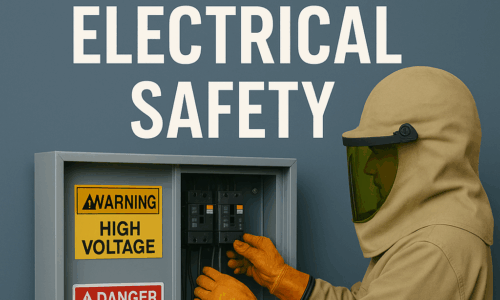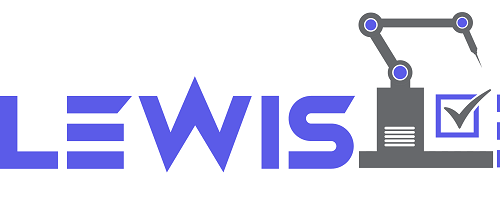Beyond AHJ Compliance: Field Evaluations Ensure Machine and Facility Safety
When companies reach out to Lewis Bass International Engineering Services, it’s often because their equipment needs to meet local code requirements.
A third-party field evaluation satisfies an Authority Having Jurisdiction (AHJ) that the equipment is electrically safe to operate. But what’s often overlooked, and is arguably just as important, is what comes after that compliance box is checked.
A properly conducted field evaluation doesn’t just help an OEM or end user avoid red tags from building inspectors. It becomes the foundation for safer, smarter operations moving forward. In this blog, we explore how field evaluation safety extends well beyond the label itself.
Lower Insurance Rates Through Demonstrated Machine Safety
Let’s talk risk. And, who knows more about risk than your insurance company? When equipment isn’t listed or certified, insurance carriers treat it as a wildcard. They don’t know if the machine has faulty wiring, if it’s improperly grounded, or if the power distribution within the cabinet is up to code. All of that adds up to higher premiums.
But when a field evaluation is performed by an accredited field evaluation body like Lewis Bass (or any other accredited FEB), the result is documented proof that the equipment has passed rigorous safety checks. The report confirms the equipment meets NFPA 79/791, UL standards, or other applicable benchmarks. This can be a game-changer when it comes to your insurance risk profile.
In many cases, insurance providers may offer better rates or reduced deductibles after receiving evidence that a facility’s equipment has been evaluated and found safe by a recognized third party. Why? Because a machine that passes a field evaluation is statistically less likely to cause electrical fires, arc flashes, or costly downtime. That means fewer claims, and fewer claims mean a better deal for you.
Field evaluation safety is not just about satisfying today’s inspector, it’s about demonstrating to your insurer that you’ve proactively reduced long-term liability.
Creating Documentation That Supports Safe Use and Maintenance
Compliance reports don’t just disappear into filing cabinets after the evaluation is complete…at least not when you’re doing things right!
One of the most valuable secondary deliverables (beyond the field label and field report) that comes from a field evaluation is comprehensive machine documentation. This includes schematics, component lists (BOM), thermal imaging (if required/requested), and observations on safe usage. It might also include corrective action plans if any issues were found during the evaluation and subsequently resolved.
This documentation serves as a blueprint for future operators and technicians. New hires can refer to it when learning to use the equipment safely. Maintenance teams can use it to identify and replace parts without guesswork. And facility managers can use it as a foundation when preparing for future audits or inspections.
Too often, equipment arrives at a site with incomplete manuals, undocumented modifications, or foreign-language labeling that makes safe operation a guessing game. A field evaluation helps cut through that uncertainty by producing real, relevant documentation tailored to your specific installation.
The downstream effect? Safer day-to-day usage, more efficient maintenance, and better preparation for any future regulatory scrutiny.
Generating LOTO Procedures That Protect Staff Across the Facility
The third unsung hero of a field evaluation is its contribution to Lockout/Tagout (LOTO) safety. Most machinery and industrial systems involve stored energy, whether that’s electricity, hydraulics, or pneumatics. If that energy isn’t controlled properly, it can seriously injure (or even kill) staff performing repairs or maintenance.
During a field evaluation, our engineers examine how energy is distributed and controlled within the machine. From there, we can help generate or validate LOTO procedures that outline how to safely power down and isolate that energy source before work begins. This process ensures:
-
Proper labeling of disconnects and control panels
-
Identification of hidden or secondary energy sources
-
Clear documentation of who is authorized to lock out the system
Once a proper LOTO procedure is developed for one machine, it raises the safety bar across the entire facility. That equipment is no longer an outlier or a risk point; it becomes an example of safe practice for the rest of the plant!
Also, more importantly, it helps the facility meet OSHA’s stringent requirements for energy control programs. These requirements are not just legal check-boxes, but also offer real-life protection for your employees.
The Real Value of a Field Evaluation
Sure, the initial driver for a field evaluation might be to get a sticker on a machine or to make an AHJ happy, but smart facility managers know that’s just the beginning.
When done right, a third-party field evaluation by Lewis Bass ensures machines are safe not only in the eyes of the code but in everyday use. It brings real, operational safety benefits: lower insurance premiums, clearer machine documentation, and better LOTO procedures that protect workers.
Field evaluation safety isn’t just a byproduct: it’s the core value.
So the next time you’re bringing in a new piece of equipment or modifying an old one, think beyond the compliance deadline. Think about how that evaluation can make your people, your processes, and your entire facility safer.
Want to learn more about how Lewis Bass can support your equipment safety goals? Reach out today…because safety doesn’t end at compliance. It starts there!


